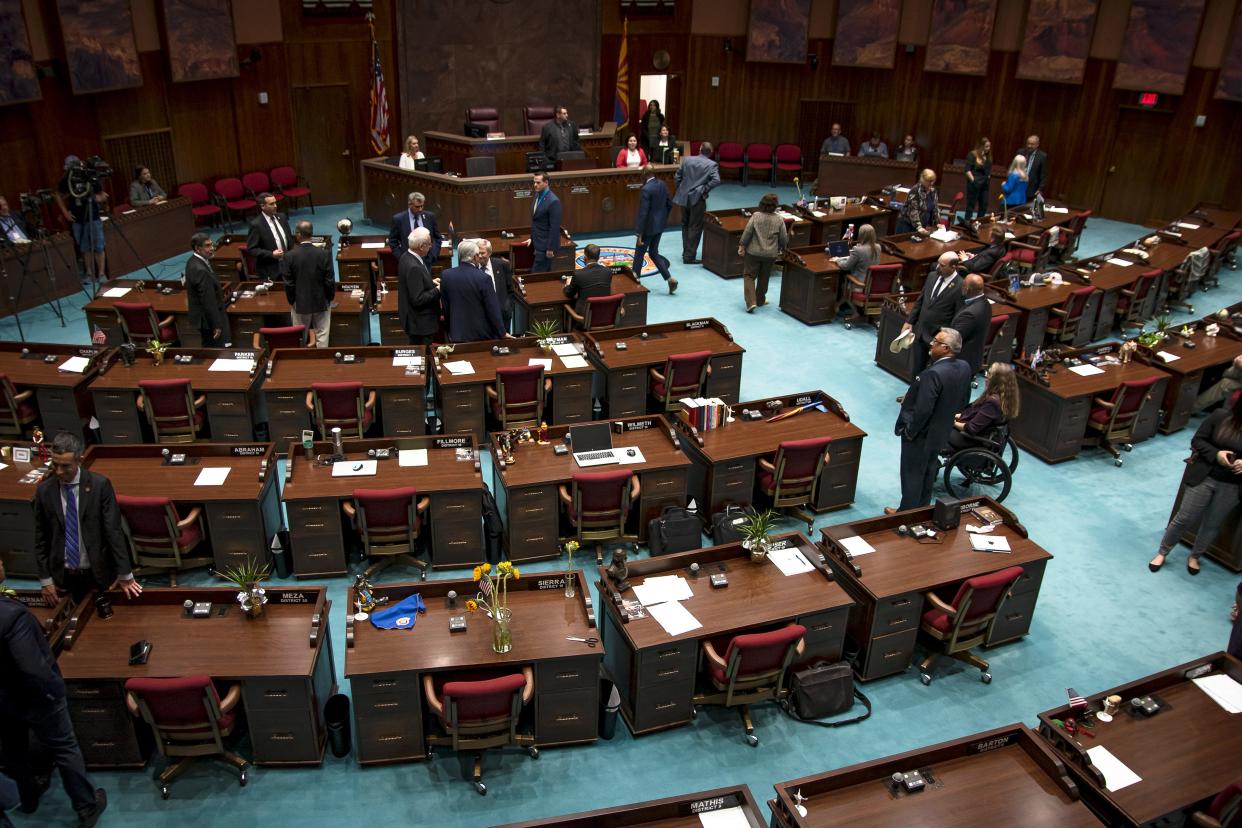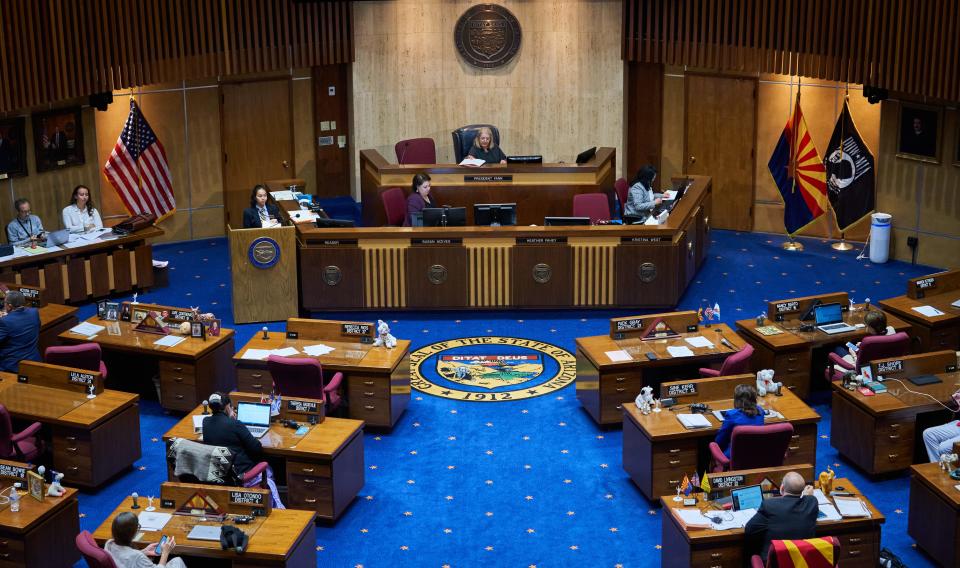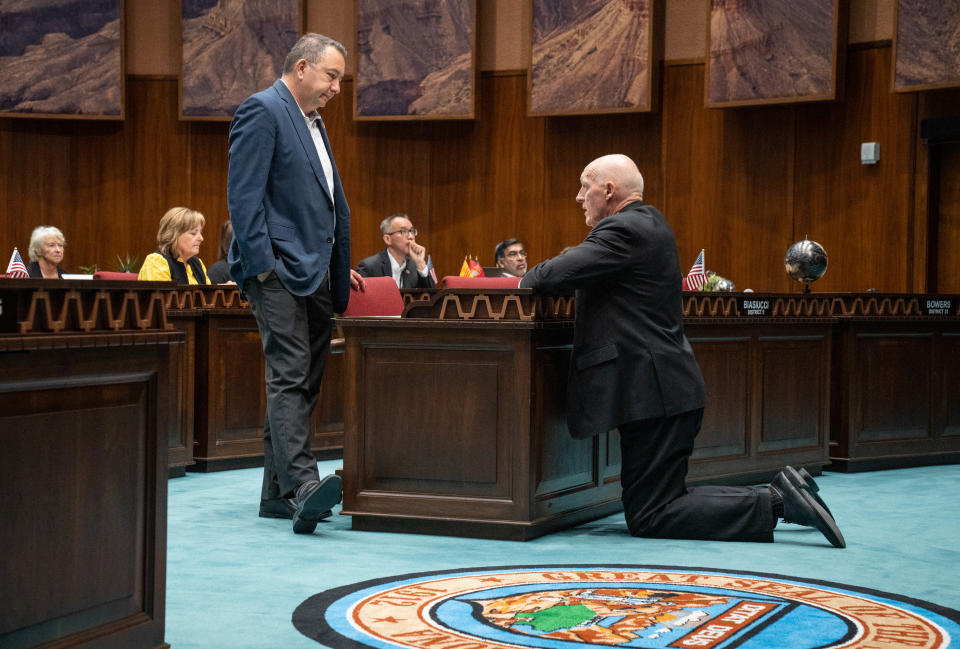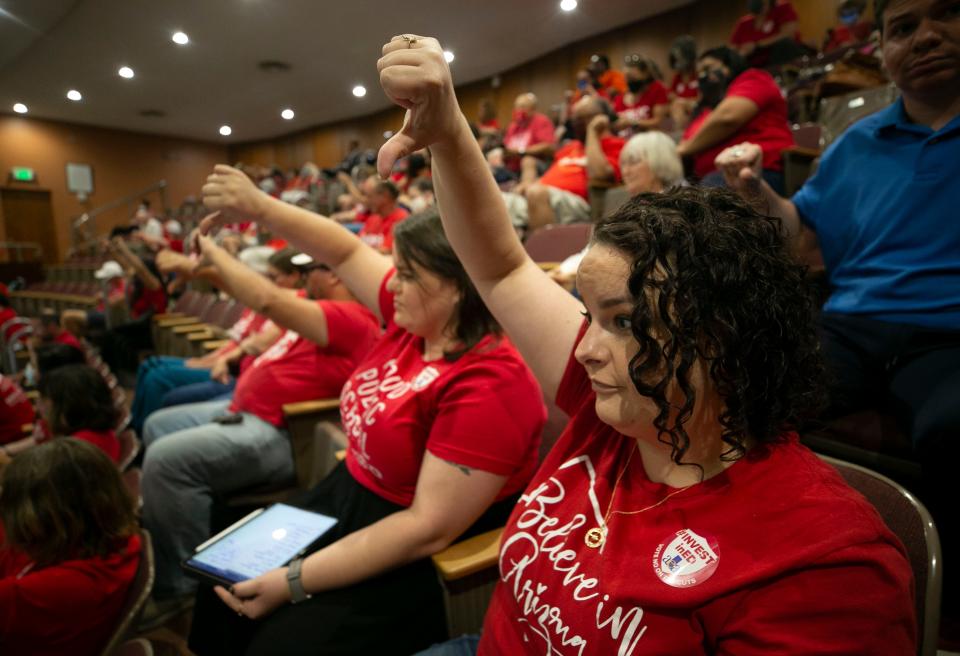Tired of a broken Arizona Legislature? Here are 6 ways to help fix it

The Arizona Legislature is broken.
Our state government is filled with well intentioned, hardworking legislators, and they are supported by the finest staff in the country.
But sessions have lengthened, and the number of bills introduced each year continues to grow – from 817 bills and 109 session days in 1980 to an astounding 1,774 bills introduced during a marathon 171-day session in 2021.
The volume and complexity of potential new law coming before lawmakers each session is now seriously straining a system that hasn’t changed in generations.
Here are a few key problems that need to be fixed:
1. Boost legislative pay
Arizona’s lawmakers are genuinely underpaid. The current legislative salary of $24,000 may be the single biggest barrier in attracting qualified candidates to run for the office.
We don’t want a Legislature filled with affluent members who have no concern over how much the position pays, and we also don’t want lawmakers struggling to support their families while serving at the Capitol. The last salary increase occurred in 1998, and the work has increased dramatically since then. What was originally a part-time position now requires year-round attention.
It’s been 25 years, and it’s clearly time for an increase. There is a balance to be found, and I suspect it lies somewhere in the range of $70,000. But the salary is set by the voters (typically based upon outside recommendations), and it is always difficult to find a constituency with the enthusiasm to fund a statewide campaign. Even so, voters should be offered the chance to give lawmakers a raise.
2. Nix term limits
Term limits have systematically drained the Legislature of institutional memory and expertise since 1992. It has changed the culture at the Capitol, effectively transforming every lawmaker into a policymaking sprinter while simultaneously retiring the concept of enduring leadership.
Legislators must run for reelection every two years. They are limited to four consecutive 2-year terms, and everyone gets fired after 8 years, regardless of performance.
More churn: Senator resigns, opening seat to write-in candidates
Few lawmakers have time to become experts on topics, nor do they have time build working relationships or to learn who to trust – which is among the most critical talents of all.
The famous friendship between House Republican Majority leader Burton Barr and Senate Democratic Minority Leader Alfredo Gutierrez was a gold mine of political and policy results, and their alliance set the tone for relationships in both chambers. That’s gone with term limits.
It’s a goofy concept worth revisiting with voters to see if they are ready for change.
3. Revise the Voter Protection Act

Arizona voters changed the state Constitution in 1998 to effectively prevent the Legislature from changing voter-approved ballot initiatives. This extraordinary change was a direct response to lawmakers repealing the voter authorized legalization of medical marijuana in the previous election.
Since the adoption of the Voter Protection Act (VPA), the Legislature may now only change voter enacted laws with a 75% legislative supermajority in both the House and the Senate, and only if the change “furthers the purpose” of the original voter enacted law (whatever that means).
As a practical matter, these laws can no longer be substantially altered by the Legislature. While this is likely what the framers of the VPA had in mind, it is the wrong way to run the lawmaking process.
It’s hard, after all, to hold the Legislature accountable for laws they cannot change.
It’s time to have a conversation with voters about the wisdom of that.
4. Change the process of passing laws

Taking the time to understand each bill is essential. Skipping the usual legislative scrubbing that comes with multiple public hearings and the attendant deliberations and analysis inevitably leads to problems.
House Bill 2839 this year is one such cautionary tale. Flying through the Legislature in just 24 hours, this promising fix was an attempt to eliminate confusion over signature requirements for precinct committeemen in the post-redistricting world.
No partisanship on this one – every member voted for the legislation, and every member likewise voted to accelerate the process to get it done quickly. The predictable result was a confusing law, intervention by the courts and a much needed legislative “do over.”
The process moves too quickly. Every January, in Arizona’s annual rite of self-delusion, the Legislature gathers with the notion of completing the business of the state in 100 days. This results in efforts to complete too much work in too little time.
The Arizona Constitution prescribes the start date for each session, but there is nothing that precludes working longer, or even year-round. The idea of public hearings on “pre-filed” bills during the summers when there is no general election is an easy place to start.
Let’s also retire quaint but outdated procedures. The most notorious example is the required reading of each bill before the entire House and Senate on three different days before work can begin on that bill.
Abandoning archaic practices will free up considerable time to engage the public and review bills – the actual business of lawmaking.
5. Fix how we gather public input

It’s more important than ever to make room for the public in the legislative process. Sunshine is well known to kill vampires, but it isn’t as widely known that it also kills bad legislation.
Any bill that survives the bright light of day is sure to be better than legislation produced under the cover of darkness.
Yet the largest hearing room in the House or the Senate holds about 120 people, roughly the seating capacity of the council chambers in Prescott (population 47,000).
Every meeting that is lawfully open to the public should be in an actual setting that allows the public to observe and participate. In hearings before legislative committees, speakers are typically limited to 3 minutes, which might leave you feeling shorted if you drove from Snowflake for that purpose.
One way to modernize and bridge the accessibility gap would be setting up “Zoom Stations” at remote locations (like public libraries) for public testimony.
And while the Legislature streams to the internet, graduating to gavel-to-gavel televised coverage of floor action from renowned outfits such as the Arizona State University’s Cronkite School is the logical next step.
It’s time to bring the Legislature into Arizona living rooms.
6. Make the Capitol Mall safer

The Capitol Mall is a confusing display of the state’s heritage, with no safe and accessible gathering space for crowds of substantial size. Yet it is increasingly becoming the primary gathering for protesters when they are distraught.
Recent evacuations of both chambers of the Legislature, euphemistically described as “going home early,” signals a dangerous trend.
All-too-necessary security steps are coming, but fences and metal detectors will become yet another barrier to public access and engagement. Most of the ideas and recommendations on this list require approval by voters, but the renovation of the Capitol Mall can be accomplished directly by the Legislature.
What if we don't like lawmakers?
It’s difficult to find support for these types of institutional changes if voters feel like their lawmakers are too out of touch with mainstream opinion, or if they just don’t trust them to adequately represent their particular interests.
It’s important that we view this agenda with an eye to the future. Think of the Arizona Legislature as you would like it to be, and recognize that these structural changes are the most important steps to getting there.
Kevin DeMenna works with sons Ryan and Joe at DeMenna Public Affairs, an Arizona government relations and public affairs consulting firm. On Twitter: @Kevin_DeMenna.
This article originally appeared on Arizona Republic: Arizona Legislature is broken. Here are 6 ways to fix it

